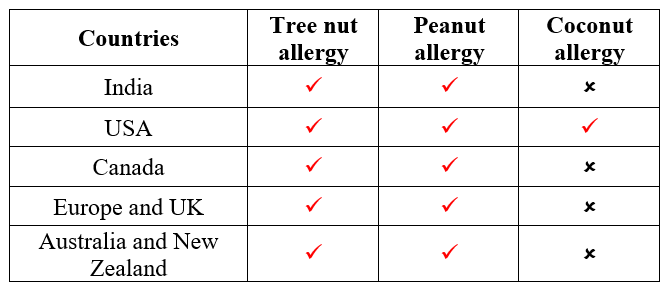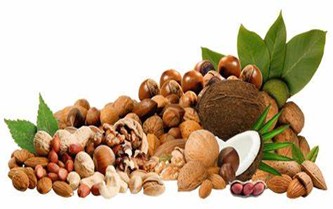According to a study report published in 2013 by World Allergy Organization Journal, only 10% of the countries around the world had accurate allergy prevalence data. The situation is not much different in India. Some estimates suggest up to 3 per cent of Indians may already have food allergies, the majority of these under 40 years of age.
Nut allergy is common among children and adults. Let us see about the classification of nuts, their allergenicity and their categorization as allergens in certain countries.
Tree nuts and their allergies
Tree nuts are the seeds of fruit-bearing trees, with a hard outer shell and hard/leathery meat inside. The major allergens in tree nuts are seed storage proteins, particularly vicilins (7S globulins), 2S albumins and legumins (11S globulins). These seed storage proteins are stable and resistant to proteolytic digestion in the stomach and hence remain intact in the gastrointestinal tract which gets absorbed into the bloodstream. When a person is allergic to tree nuts, these proteins bind to specific IgE antibodies of the person and trigger an immune response by release of inflammatory messengers like histamine and heparin, causing mild to severe reaction symptoms (including anaphylaxis).
Peanuts and their allergies
Peanuts belong to the bean or legume family that grows underground and are more closely related to peas and beans since it grows in a pod. The proteins present in peanuts are different from those in tree nuts. The major allergens in peanuts are Ara h1 (vicilin), Ara h 2 and Ara h 6 (2S albumins) and Ara h 3 (legumin). People with peanut allergies are likely to be allergic to soybeans, peas and lentils.
Coconut and its allergies
Coconut belongs to the palm tree family. It is considered a tree nut for food labelling purposes but is in fact a drupe. The coconut allergen proteins were identified as Coc n2, 7S globulin, Coc n4 and 11S globulin. US FDA recognises coconut as a tree nut and certain allergic responses to coconut have been reported. Contact allergic dermatitis is more common than allergy due to oral ingestions.
In 2019, the Coconut Coalition of the Americas (CCA) launched a campaign to remove coconuts from the “top 8 allergens” list. According to the association, the FDA misclassified coconut, which is causing confusion for a lot of people because it shouldn’t be classified with tree nuts.
Nut allergies in certain countries

Labelling guidelines
You may remember from our previous article “Allergen Labelling Changes: Are your Labels updated?” that different countries have different labelling requirements when it comes to declaring the allergens. In India, the oils, raw agricultural commodities and distilled alcoholic beverages derived from these ingredients are exempted from this declaration.
Many countries are making changes to their existing regulations regarding labeling of allergens. This is to ensure allergen labelling is more clear, transparent and consistent.





